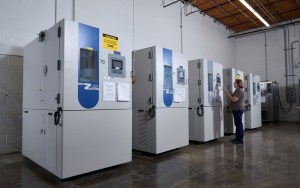With the newly released revision to ASTM F1980, DDL wanted to summarize the significant changes that will impact how accelerated aging will be conducted moving forward.
If you have not had a chance to review the newly revised standard, we strongly recommend that you purchase a copy for your own internal review. https://www.astm.org/f1980-21.html
ASTM F1980 was originally established for packaging materials to determine how the sterile barrier would be affected over time. The newly revised standard now addresses polymers for both the product and the packaging system. With this significant change, medical device manufacturers (MDMs) must consider whether the polymers that make up their product and/or packaging system could be affected by humidity. If any polymers that make up a product or packaging system are considered hydrolytic or corrosive, the use of controlled humidity will be required during accelerated aging (polyamides absorb moisture from the environment and may degrade, while polyolefins will not).

If you have a hydrolytic polymer as part of your product or package system, the standard recommends what humidity to use in section X3.3 (45-55%RH), but ultimately it is up to each medical device manufacturer to determine if that is suitable or not. If you have identified that your polymers do not require humidity, then the use of temperature and ambient RH will be sufficient for your aging studies. Please note that you will need to have a justification in place for whether humidity is needed or not based upon your specific product and packaging system.
As so many packaging systems have failed in the past with the use of high humidity (delamination, material degradation, etc.), you will need to be cautious if you are using a multi-layer material that has a water based tie layer. In this situation, you may want to consider running your package validation testing (ambient RH) separate from your product aging (higher RH).
Another major change to the standard relates to label storage claims. As most MDM’s claim storage conditions on their label, F1980 now recommends that you utilize the upper temperature limit listed on your label storage claim as the ambient real time aging temperature (TRT) within the Q10 (Arrhenius) equation.
For real time aging, the standard allows for a different real time aging temperature than what may have been used in your accelerated aging equation.
For the majority of medical device manufacturers this testing is a significant shift from what was performed in the past. We strongly recommend that you obtain a copy of the revised standard for internal gap analysis to evaluate how this will impact your aging testing based upon the types of polymers that make up your product and packaging system.
With major changes to how aging will now be performed, many organizations will need to update their chambers to add humidity control. This process is not going to happen overnight and will take time to fully implement.
If you have any questions, please don’t hesitate to contact us, or call us at 800-229-4235